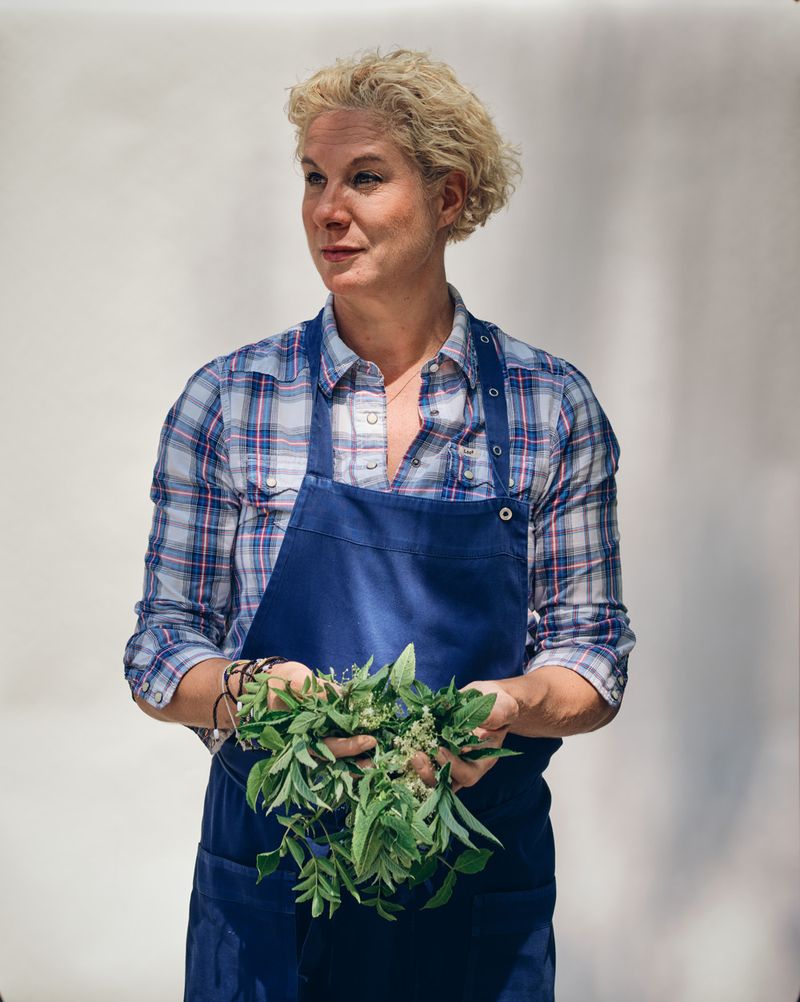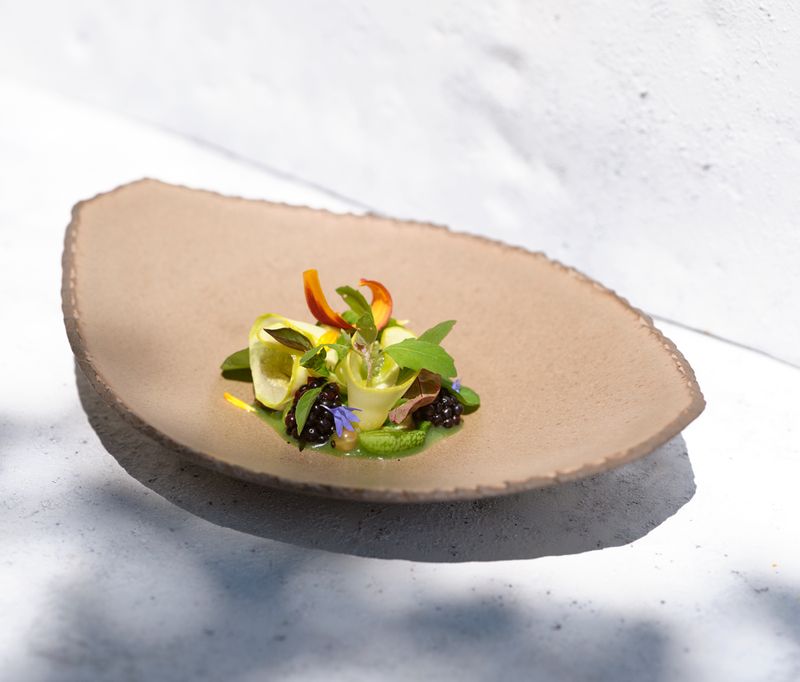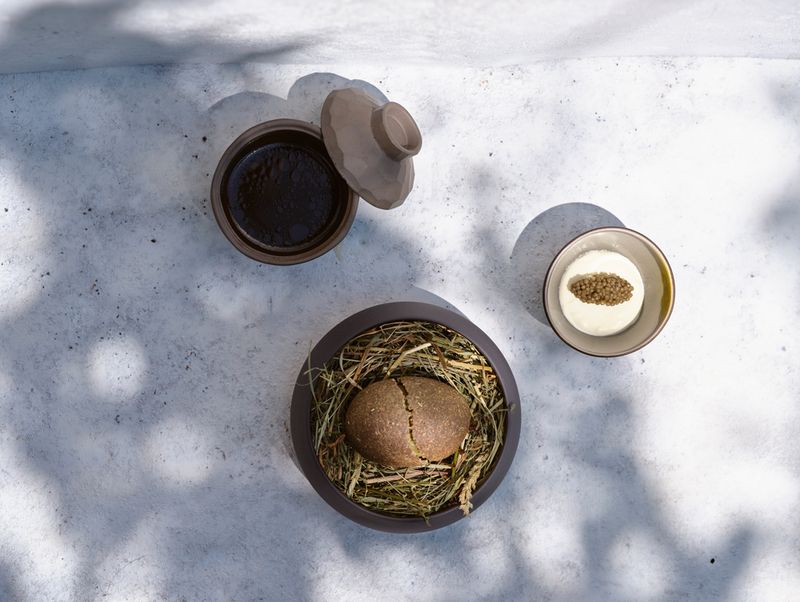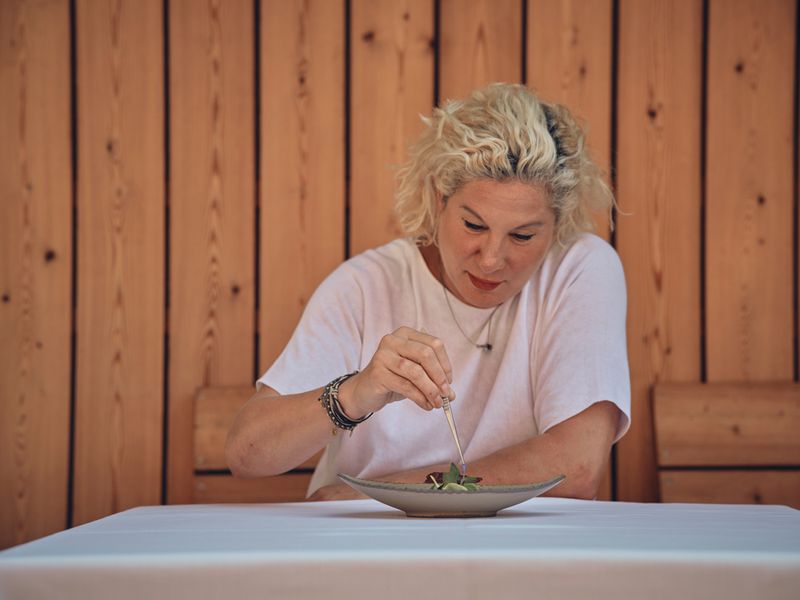Nature is her supermarket. Cooking with what grows around and not having a set signature menu is Ana Roš’ forte. This seasoned chef, who never went to a culinary school, creates exceptional seasonal menus for Hiša Franko, her award-winning three-Michelin star restaurant in Kobarid, Soča Velley, Slovenia.
After the Netflix documentary Chef’s Table featured her, there was no looking back for Ana Roš, who is among eight women to have won three Michelin stars. Now she’s made her way to India in collaboration with Conosh where she will do two dinners at Taj Mahal, New Delhi on February 17 and 18 and two at The Taj Mahal Palace in Mumbai on February 23 and 24. She’s also doing a masterclass in each city. However, did Ana Roš dream of becoming a chef from childhood or did she have different plans? Zee Zest chats with her about her journey.

You were never interested in cooking as a child?
Many chefs love saying that when I was a kid, I knew I'm going to become a chef. I didn't. I had no time for cooking because I was living an intense life skiing at a national level. When I had to take my turn at cooking at the university where I was studying diplomatic relations, everybody wanted to skip the meal because my culinary skills were not great. But on the other hand, we had a great legacy of good cooking at home. My mom, my grandmother were exceptional cooks.
How did Hiša Franko happen?
I went to the restaurant as the girlfriend of the owner’s son. I was still a student and needed money, so I worked a bit and was super useful because I speak a lot of languages and we had many French guests. At that time, it was a local place. After a few years, his parents decided to retire. I had already said no to a diplomatic career because I was in love, so then I started creating a team here.
What kind of food was served back then? What is Slovenia’s food all about?
Slovenia has great regional cuisines, but you can’t talk about a national cuisine because we are geographically so diverse. Soča Valley, where I come from is completely cut away from the rest of Slovenia by mountains, so we have very original local cuisine. As our border adjoins Italy, Italians came this side for cheaper fuel, great meat and would spend money in restaurants. Locals cooked what Italians loved eating like seafood pastas, steaks, a whole grill fish. But when Italy lowered fuel prices, people stopped coming and our restaurants became empty. That is when we realised that we have to create a destination to survive because we're in the middle of nowhere.

At what point do you think things started changing for Hiša Franco? Was it after the Netflix show Chef’s Table?
The brutal one was with Netflix but the journey began earlier. I started cooking around 2002 and by 2007, I was the guest chef at one of the biggest food conferences in France in Toulouse – ‘The future stars of the world gastronomy’. I started getting attention from the media and foodies, because I was cooking different food, I was self-taught, so my approach was different, fresh, younger, a little bit crazy. I was of course focusing on local ingredients and produce. Almost every second month, I was at some event. At one such event New York, I was the only girl and I was from Slovenia, a country nobody knew. In 2015 when I got a call from Netflix, it was like a sum of all these things. They were looking for something exotic.
And then Netflix came in and changed my life. After than we had to restructure the kitchen completely. I call that period “profit professionalisation” of my work. Earlier there were maybe 10 people working in the family-based restaurant, but two years later we had 40. So Hiša Franko today is transformed from what it was back during the Netflix time.
0
Did things also change a lot when Hiša Franco won two Michelin stars the 2020?
Yes. Slovenia probably had the longest lockdown in Europe for the restaurant business. We wondered who would come because 95% of our guests were international. But then we got two Michelin stars, and that brought back Slovenians, Hungarians and Croatians who could travel. So, the restaurant began filling up, which probably wouldn't have survived otherwise. I actually said to myself, it is going to be two stars, or zero.
What’s there in the lineup of the pop-up in Delhi and Mumbai?
In Hiša Franko, we are in between the seasons. The 2023 season is closed and we are reopening in a month for 2024, so we are preparing a new menu. Hence for the pop-ups here, the base of the things that we are presenting here comes from the 2023 menu. We discussed it with Conosh and the hotel’s chefs and they really helped us to understand more or less what is available. Then between yesterday and today, we went to the spice market and fine-tuned the flavor combinations in our head.

We have two dishes that we are bringing to the third season and they're actually in the pop-up menu as well. It's a corn beignet which is the revival of an old traditional dish in the Soča valley. Its polenta dressed with warm cottage cheese, pork cracklings and melted cheese on top. It's a really yummy super juicy bite. And then there is a mountain potato that is cooked in a hay crust. We brought the hay with us to make the crust because it's a high mountain hay and has a lot of wildflowers inside.

Is it tough to run a restaurant just based on seasonal menus and not signature dishes because then you don't have repeat customers you have a favorite dish?
If I listened to the customers, then the menu would always the same because every customer has a favorite dish. But I believe that we must work hand in hand with nature which keeps on changing all the time. We get Porcini mushrooms in one month, then we get black trumpets in another and then wild watercress. When you don't have these, there’s no market where I can go and buy them, so you have to be flexible and very creative.

As a chef like what are your some of the favorite creations that you've done so far with other chefs?
I think one of the best dinners I did was in Bangkok with Indian Chef Garima Arora. She's incredibly creative. I think we share very similar passions. We went to Bangkok after a long trip to Asia so when we landed, we didn’t have a single ingredient left. We really needed to be creative and Garima took us to the best markets and then I remember I actually created 14 new courses in two days. We were getting mails after that from people who were crying because it was that good.
You work with farmers and local producers. Tell us about that.
When we started, we could not sit in the car and go to shop, we needed to go directly to the farmers. But today, we have built a huge chain of farmers, producers, people with gardens and foragers that work with us. We're microlocal and all basic ingredients and fresh ingredients we use are like a maximum 100 kilometers away. I am most proud of the green star – which we got for sustainable approach.


_1708071848732_thumb_1200.jpeg?w=3840&q=75)
_1707731543830_thumb_300.jpeg)